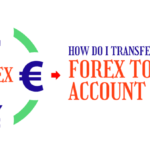Currency pairs in the forex market measure the value of one currency against another, with each pair consisting of a base currency (the first listed) and a quote currency (the second listed). The price indicates the amount of the quoted currency required to buy one unit of the base currency.
In this article, we will explore what major pairs in forex are, how they are traded, and why they are popular.
Quick Insights
What are the major forex currency pairs?
In the forex market, forex traders can choose from many currency pairs, but the major currency pairs are the most popular. These currency pairs feature the US dollar (USD), which is the currency of the world’s largest economy.
What are the most popular forex pairs? Here are the 6 major forex currency pairs, which are the most widely traded,
- EUR/USD
- USD/JPY
- GBP/USD
- USD/CAD
- AUD/USD
- USD/CHF
EUR/USD (Euro/US dollar)
- The EUR/USD is the most traded currency pair globally, reflecting the economic interactions between the Eurozone and the United States.
- Market share: It accounts for about 22.7% of the total forex market share.
- Liquidity and volume: The high trading volume ensures tight spreads, which is favorable for traders as it lowers transaction costs.
- Negative correlation with USD/CHF: When the EUR/USD goes up, the USD/CHF often goes down. This is because the Swiss franc and the euro often move in tandem against the US dollar.
- Positive correlation with GBP/USD: Both the euro and the British pound tend to move similarly against the US dollar due to their geographical and economic proximities.
USD/JPY (US dollar/Japanese yen)
- This pair indicates the number of Japanese yen (JPY) required to purchase one US dollar (USD). It is the second most traded pair in the forex market.
- Market share: It holds a market share of 13.5%.
- Economic sensitivity: This pair is sensitive to political and economic relations between the United States and Japan, including trade policies and geopolitical events.
- Positive correlation with USD/CHF and USD/CAD: These pairs often move together because the US dollar is the base currency in all of them.
- Interest rate sensitivity: Changes in interest rates by the Bank of Japan (BoJ) can significantly impact the USD/JPY exchange rate.
GBP/USD (British pound/US dollar)
- The GBP/USD pair, known as “The Cable,” reflects the value of the British pound against the US dollar.
- Market share: It accounts for 9.5% of the forex market share.
- Economic indicators: The strength of the UK and US economies heavily influences this pair. Important economic indicators include GDP growth rates, employment figures, and interest rate decisions by the Bank of England (BoE) and the Federal Reserve (Fed).
- Negative correlation with USD/CHF: Similar to the EUR/USD, this pair often moves in the opposite direction of the USD/CHF.
- Positive correlation with EUR/USD: The British pound and the euro usually move similarly against the US dollar.
USD/CAD (US dollar/Canadian dollar)
- This pair shows the value of the Canadian dollar (CAD) against the US dollar.
- Market share: It has increased to 5.5%.
- Interest rates: Both US and Canadian interest rates impact this pair.
- Oil prices: Since oil is a major export for Canada, changes in oil prices can significantly affect the value of the Canadian dollar.
- Negative correlation with AUD/USD, GBP/USD, and EUR/USD: This is because the US dollar is the quote currency in these pairs, and movements in the USD/CAD often mirror opposite movements in these pairs.
AUD/USD (Australian dollar/US dollar)
- This pair represents the exchange rate between the Australian dollar (AUD) and the US dollar.
- Market share: It captures 5.1% of the forex market.
- Exports: The value of Australia’s exports, especially commodities like iron ore and coal, significantly impacts the AUD.
- Interest rates: The Reserve Bank of Australia’s (RBA) interest rate decisions also play a crucial role.
- Negative correlation with USD/CAD, USD/CHF, and USD/JPY: Since the US dollar is the base currency in these pairs, they often move in the opposite direction of the AUD/USD.
USD/CHF (US dollar/Swiss franc)
- The USD/CHF currency pair shows how much one US dollar is worth in Swiss francs.
- Safe-haven currency: The Swiss franc (CHF) is considered a safe place for money during economic uncertainty.
- Volatility and liquidity: It has high volatility (frequent price changes) but is less liquid (fewer buyers and sellers).
- Hedging against risk: Traders use USD/CHF to protect against economic risks, making it a strategic choice during market instability.
Conclusion
Each currency pair has unique characteristics influenced by economic indicators, political relations, and market sentiment. Understanding these factors helps traders make informed decisions and develop more effective trading strategies.
Pro Tip
Whether you’re experienced or just starting, learning about these major currency pairs can improve your trading strategy and market knowledge. Make smart decisions with our trusted forex brokers. Discover valuable insights on stocks, CFDs, cryptocurrencies, and banking. Share your thoughts in the comments below.









